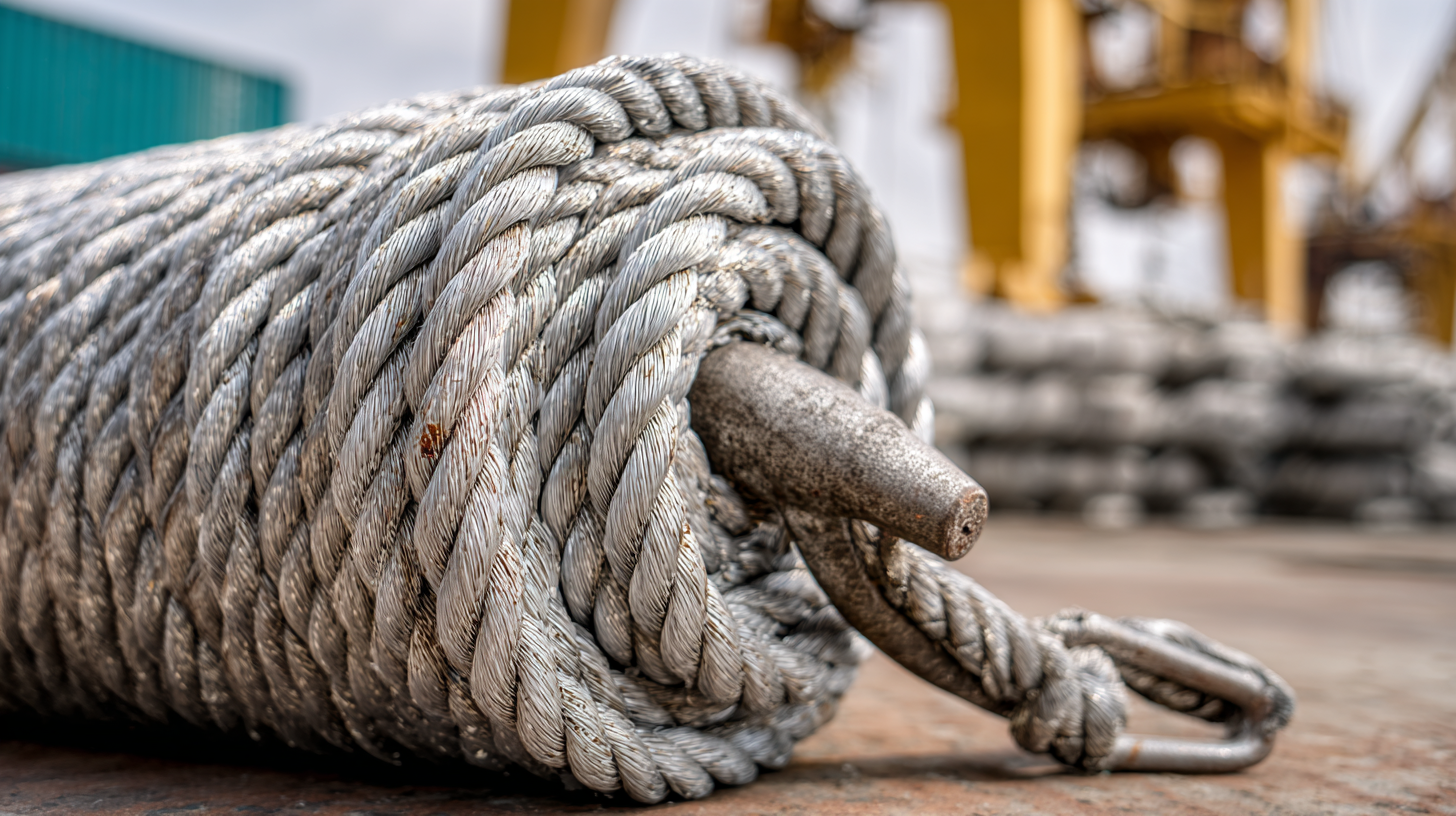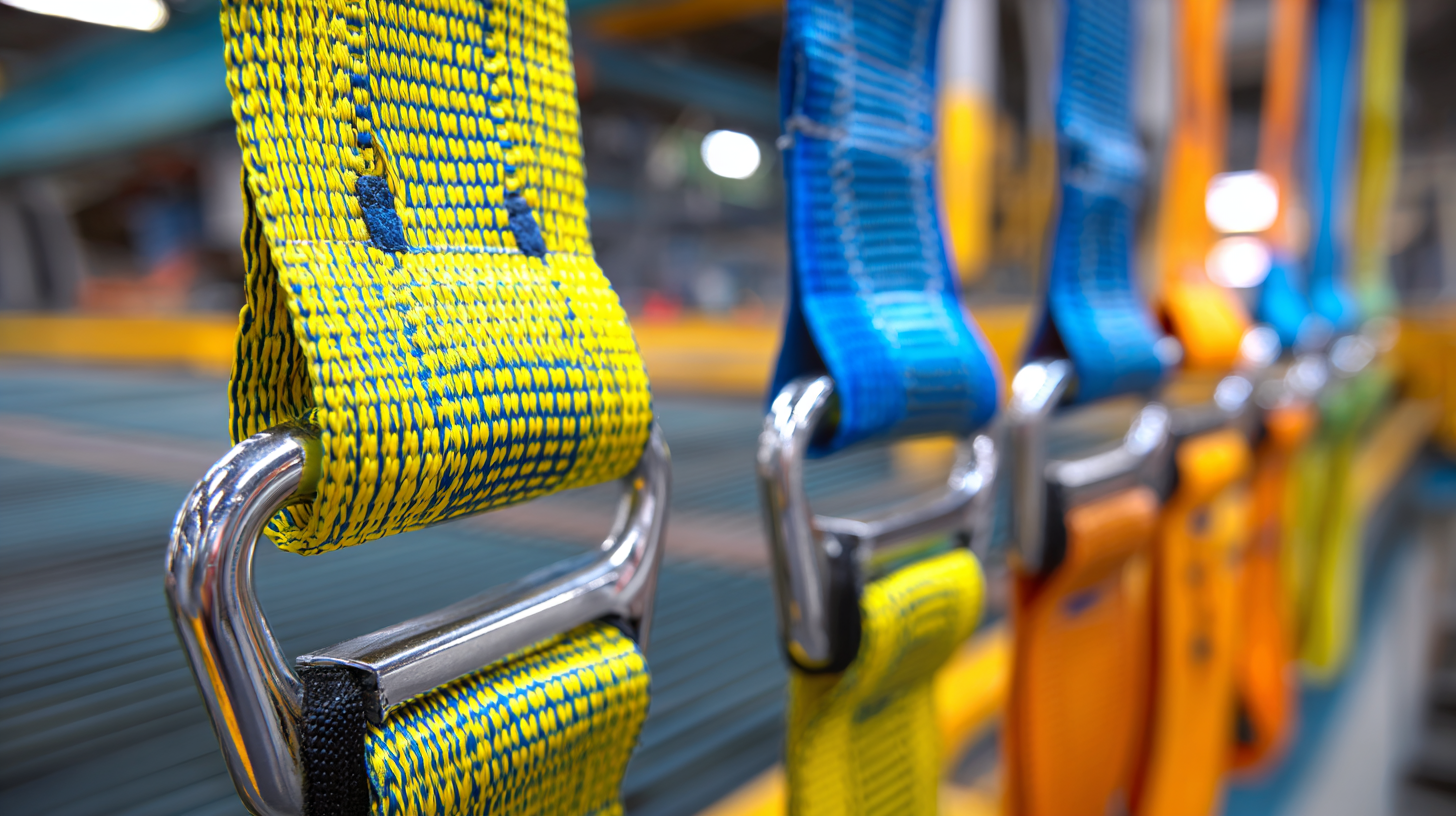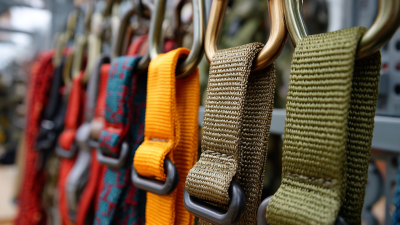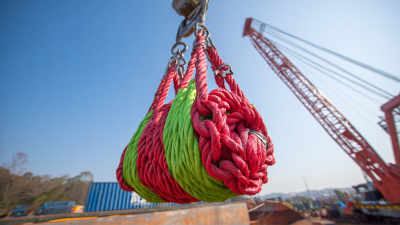In the realm of heavy lifting applications, the significance of choosing the right equipment cannot be overstated. Webbing slings have emerged as a pivotal solution, offering unparalleled safety and effectiveness. According to a report from the Industrial Lifting Equipment Association (ILEA), the use of webbing slings has increased by 30% over the past five years, driven by their lightweight nature and impressive load-bearing capabilities. These slings, made from high-strength synthetic fibers, provide a reliable means of transporting heavy loads while minimizing the risk of damage and injury.
Industry expert, Dr. Emily Carter, a leading authority on lifting equipment, emphasizes the advantages of webbing slings, stating, "The adaptability and strength of webbing slings make them an essential tool in any lifting operation." This sentiment is echoed by numerous safety standards that recognize webbing slings for their ability to reduce the risk of accidents in various environments, from construction sites to warehouses. As we delve into the top five benefits of using webbing slings for heavy lifting applications, it becomes clear that their integration into lifting practices is not just a trend, but a vital step towards a safer and more efficient workplace.

Webbing slings have emerged as a favored choice for heavy lifting applications, owing to their unique advantages over traditional lifting equipment. One key benefit is the lightweight nature of webbing slings, which makes them easier to handle and transport. According to a report by the American National Standards Institute (ANSI), the weight-to-strength ratio of synthetic webbing can be as high as 7:1, meaning a relatively lightweight sling can support significant loads with exceptional safety margins. This not only enhances operational efficiency but also minimizes the risk of workplace injuries associated with cumbersome gear.
Furthermore, webbing slings exhibit superior flexibility and can conform to the shape of the load, providing a more secure grip. The Occupational Safety and Health Administration (OSHA) emphasizes that this adaptability can significantly reduce the chances of load slippage during lifting. Additionally, the soft texture of webbing slings prevents potential damage to the load’s surface, which is a notable limitation of traditional metal chains and hooks. With their remarkable resistance to wear, UV rays, and chemicals, webbing slings also offer longevity, which is supported by industry data indicating a lifespan that can surpass 10 years with proper care and usage. This durability coupled with safety benefits makes webbing slings an increasingly popular alternative in the lifting equipment sector.
| Benefit | Description | Comparison to Traditional Lifting Equipment | Safety Factor |
|---|---|---|---|
| Lightweight | Webbing slings are significantly lighter than chains or wire ropes. | Easier handling and less physical strain on workers. | High safety with proper use and weight considerations. |
| Versatility | Can be used for various lifting applications across different industries. | More applicable to diverse load shapes compared to rigid systems. | Adaptable to unique lifting situations, increasing safety. |
| Reduced Surface Damage | Soft webbing minimizes damage to surfaces of the load. | Less abrasion compared to steel chains or ropes, preserving load integrity. | Safer handling of sensitive materials. |
| Ease of Inspection | Webbing slings can be inspected easily for wear or damage. | Visual checks are more straightforward than those for chains. | Enhanced reliability in monitoring equipment safety. |
| Cost-Effectiveness | Generally cheaper than traditional steel lifting equipment. | Lower initial investment and ongoing maintenance costs. | Provides a good balance between cost and safety features. |
Webbing slings have become an essential tool in heavy lifting applications due to their enhanced safety features. According to the Occupational Safety and Health Administration (OSHA), efficient lifting equipment is crucial for minimizing workplace accidents, and webbing slings significantly contribute to this objective. Made from high-tenacity synthetic fibers, these slings are lightweight yet strong, offering impressive load-bearing capacities that can exceed 30 tons. This combination of strength and flexibility allows for safer handling of heavy loads, reducing the risk of accidents such as slippage or improper load distribution.

Moreover, the design of webbing slings includes features like color-coded tags that indicate the load capacity, which aids operators in selecting the appropriate sling for specific tasks. Industry reports from the Sling Manufacturers Association indicate that using webbing slings in lifting operations has led to a 15% decrease in reported lifting-related injuries in recent years. Their flat design minimizes the risk of damage to both the load and the sling itself, offering a safer alternative to traditional steel chains and ropes. Enhanced safety protocols and user-friendly designs continue to position webbing slings as a preferred choice for professionals in the heavy lifting sector.
Webbing slings have emerged as a versatile solution in heavy lifting applications, capable of handling various types of loads safely and efficiently. Their design allows for minimal stretch and high strength-to-weight ratios, making them ideal for lifting, hoisting, and rigging tasks in diverse settings. According to industry reports, webbing slings can support loads ranging from a few hundred pounds to several tons, which illustrates their adaptability to different lifting requirements, whether for construction, industrial, or recreational activities.
One of the standout features of webbing slings is their compatibility with an array of load types. Unlike traditional steel chains that can damage delicate items, webbing slings provide a cushioned grip, preventing surface damage during transport. Additionally, they come in various widths, lengths, and configurations, allowing operators to customize their lifting solutions based on the specific nature of their task. This adaptability not only enhances safety but also optimizes efficiency in heavy lifting operations, a critical factor in high-stakes environments where every second counts.
Webbing slings have become a favored choice in heavy lifting applications due to their lightweight design and ease of handling. Unlike traditional lifting slings, webbing slings are made from durable materials that provide the necessary strength without adding significant weight. This feature allows operators to maneuver these slings with minimal fatigue, optimizing efficiency on the job site. The lightweight nature of webbing slings facilitates quicker setups and adjustments, making them ideal for dynamic environments where time is of the essence.

In addition to their manageable weight, webbing slings offer exceptional flexibility, allowing them to conform to various load shapes and sizes. This adaptability not only enhances safety during lifting operations but also minimizes the risk of damage to the load itself. The ease of handling associated with webbing slings empowers workers to execute heavy lifting tasks with confidence, significantly contributing to a smoother workflow. Therefore, integrating webbing slings into lifting applications promotes not only efficiency but also safety in handling challenging loads.
Webbing slings have gained popularity
in heavy lifting applications due to their remarkable cost-effectiveness, particularly in the long term.
One of the primary advantages of these slings is their durability.
Made from high-strength synthetic materials, webbing slings can withstand extreme conditions, reducing the frequency of replacements.
This longevity not only minimizes expenditure on purchasing new equipment but also reduces downtime for businesses, ensuring that operations run smoothly and efficiently.
Another compelling aspect of webbing slings is their lightweight nature,
which contributes to overall labor cost savings. Unlike traditional lifting methods, often cumbersome and heavy,
webbing slings are easier to handle, allowing workers to manipulate them with greater ease.
This attribute enhances workplace safety as it reduces the risk of injuries associated with heavy lifting.
Moreover, their flexibility in application enables users to target various lifting needs without necessitating extensive investment in multiple specialized slings.
Thus, the combination of durability, safety,
and versatility makes webbing slings a financially savvy choice for companies aiming to optimize their lifting operations while controlling costs effectively.






